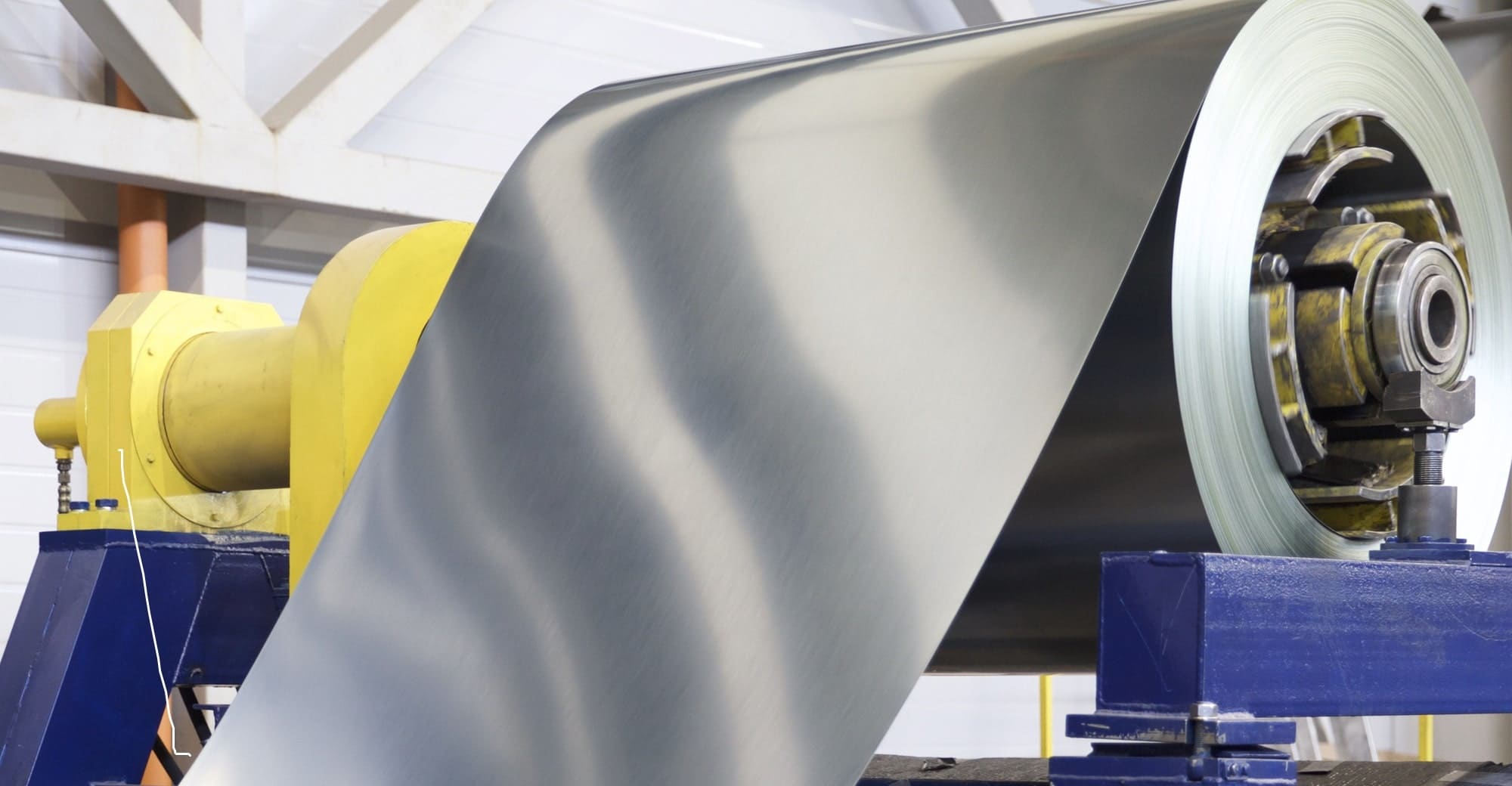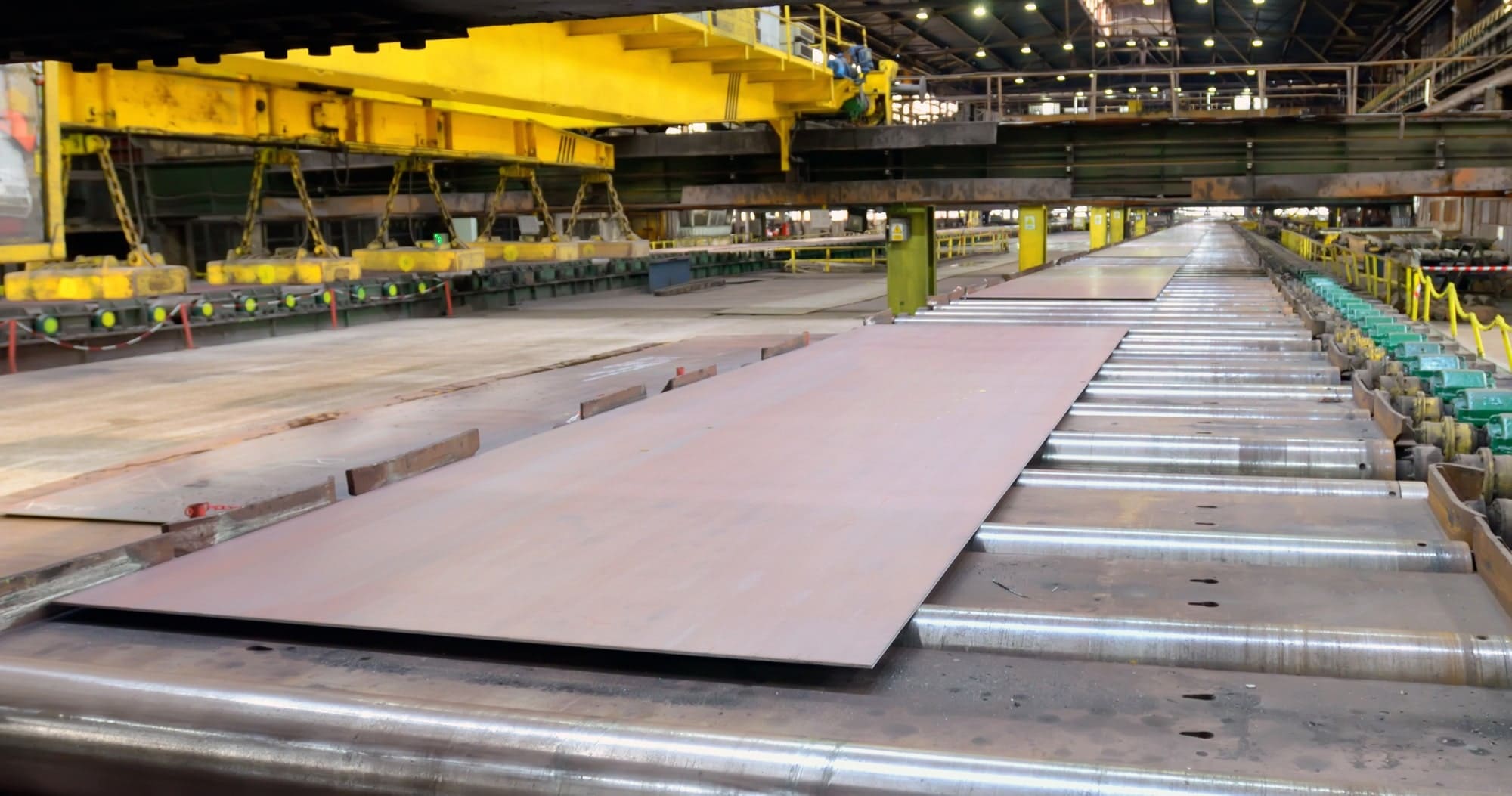The vast majority of their bodies are made of steel. This makes the automotive industry one of the main consumers of flat steel products, accounting for up to 10% of all steel produced in the world.
However, it has not always been like that.
The first car body shops were set up on the premises of carriage workshops. For their products, they used the same materials as before, mainly wood. Nearly every body they made was a unique piece. Once assembly line production came into being (which is attributed to either Henry Ford or Rens Olds), the need arose for a mass-produced, inexpensive material, from which standardised car body panels like fenders, doors, hoods and other could be manufactured.
This is where the steel industry, or rather steel rolling, came to the rescue by offering cold-rolled steel products.
Evolution of steel rolling
Rolling is the final phase of the extensive steel making process, which follows sinter, hot metal and steel production. Due to rolling and its evolution, a huge number of goods are produced today requiring various equipment and technologies.
In the flat steel segment, the main division lies between the two large groups: hot- and cold-rolled flat products. They differ in thickness and key characteristics and, therefore, application, although some types of CR (cold-rolled) and HR (hot-rolled) steel products are hard to distinguish from each other.
From the point of steel-making technology, cold rolling is the phase following the hot rolling, which makes it possible to obtain excellent properties and produce thinner gauge material.

Evolution of flat steel
Before the 16th-17th centuries, steel plates were mainly made by smiths. Their products were not of high quality and not manufactured in big volumes. Therefore, they began to be gradually replaced by rolling mills, which were mechanised devices permitting a significant increase in the capacity of the process.
Leonardo da Vinci is believed to be the first to invent such a device. A sketch of a tin rolling machine was found among his other sketches. Historians, however, are still racking their brains as to whether it was his invention or whether the great Florentine simply recorded a device that he had seen somewhere in the second half of the 15th century in his diary.
One thing is clear: this technology became widespread during the Industrial Revolution, along with steam engines and a growing demand for metal. The smiths were being squeezed more and more out of the mass production of metal goods. Their forged plates had numerous flaws from variation in thickness along the surface and they lacked the capacity for making large plates.
The first rolling mills had only two rolls, which pressed the workpiece. The force being applied led to the plastic deformation of metal to give it the final shape. This process was also called expanding. It first used a manual drive and then water power. In the late 18th century, steam rolling mills were developed. Rolling operations finally became one of the main stages of the steel making process.
It is often the case that, as technology develops, processes become more specialised, which was seen even in such a narrow field as the production of flat steel. First, there were hot rolling mills, where a red-hot workpiece passed between the rolls. Then the first cold rolling mills were put to operation in the 1880s to produce flat products. These mills evolved and improved over time.
Features of cold-rolled steel
Liquid steel is cast either as ingots, which are then transformed into feedstock (slabs) for long and flat steel products by slabbing or blooming machines, or into semi-finished products by continuous casting machines.
Passing through a rolling mill, the reheated slabs are processed into hot-rolled plates (4 millimetres and thicker) or sheets (below 4 mm) in coils or cut to a length to be used for the manufacture of ship hulls, large steel structures and industrial installations.
As the application of steel expanded, the demand became more apparent for wide, thin, light and formable sheets that could be easily processed, for instance, by cold forming. Hot-rolled material did not quite suit the purpose. Therefore, steelmakers began to use cold rolling of hot-rolled sheets previously pickled in sulphuric or hydrochloric acid for scale removal.
The finished cold-rolled coils and sheets have smoother surfaces and better dimensional accuracy. Steel, however, becomes hard and its ductility decreases. Therefore, the rolling process is followed by protective gas annealing in hood furnaces and continuous annealing lines. Before cold-rolled coils become finished goods, they are subject to skin-passing, which is one more rolling stage with a slight reduction. All of this together allows for the achievement of excellent ductile properties and the improvement of the surface quality. The finished merchant product comes in bundles of sheets or in coils.
Ukraine has two large producers of cold-rolled sheets. They are Ilyich Steel and Zaporizhstal of Metinvest Group. The operation of the Cold Rolling Shop at Ilyich Steel is coupled with the 1700 HSM, which recently underwent a large-scale modernisation. This shop can produce up to 800,000 tonnes of cold-rolled sheets and coils. Zaporizhstal has two cold rolling shops with a total capacity of about one million tonnes per year. They produce a wide range of sizes and steel grades.

Cold-rolled steel grades and their application
Cold-rolled sheets for general use are normally made from steel grades DC01, CS Type B, St3kp, St3ps, St3sp, St4ps 08kp, 08ps, 10kp, 10ps, 15kp, 15ps, 20kp, 20ps, 25, 30, 35, 40, 45 (where kp is rimmed steel, ps is semi-killed steel and sp is killed steel), and many other. Cold-rolled sheets for cold forming are made from steel grades DC03, DC04, DC04EK, 08U, 08ps, 08kp. High-strength steel is produced from grades 09G2, 09G2S, 10HNDP, 14G2, SS Grade 40 Type 2, HC340LA and others. The steel grade and requirements for mechanical properties and other quality parameters of cold-rolled steel are determined by final processing and end use.
Finished coils and sheets have a smooth surface, therefore, they are used where, apart from other characteristics, aesthetics and visual appeal are important. For example, they are used for the manufacture of machine and instrument bodies. Cold-rolled flat steel can also be easily processed by welding, bending and forming.
Due to stress being evenly distributed along the sheet after annealing, distortion is not much of a problem during welding. This is crucial for the automotive industry. Produced from low-carbon steel, the sheets can go through multiple bending and forming without any problems. Forming + welding = car body.
This paves the ways for cold-rolled steel sheets to be widely used in automotive and instrument engineering industries and for the manufacture of tubes and household appliances.
Construction marks another important application. This market segment consumes enormous quantities of cold-rolled steel. However, galvanised and colour-coated steel sheets and coils are in greater demand there. They are used for the manufacture of corrugated steel sheets, metal roofing tiles and other goods and semi-finished products for application in construction.
The production of flat steel does not stand still. It is primarily driven by customer requirements and the growth in competition with other materials, because the chemical industry is also developing. Different plastic and composite materials are used more and more in modern cars. They are lighter, able to protect components from dust and moisture, and they are easier to shape. However, they do not so far provide the required level of safety and are almost impossible to repair. Carbon fibre, on the other side, is too expensive for mass production.
So, a modern car is a combination of different materials, where steel will continue to play a key role. It is the parts and assemblies made from cold-rolled steel that are critical for the passive safety of those who are inside the car. This is not a reason for steelmakers to become complacent, however. They still have new grades to develop, which can compete with other materials in terms of safety, price, durability and design flexibility.
